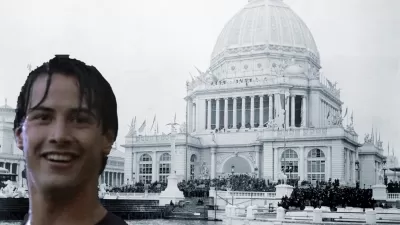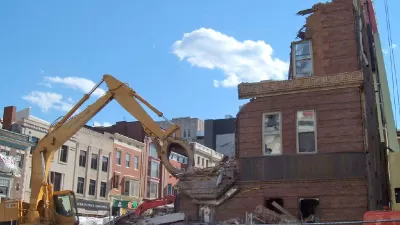A thoughtful look at what made Daniel Burnham's plan for the City of Chicago so successful.
"I started creating a list of attributes of the plan I think contributed to its success. Interestingly, all of these are lessons for today's planners and are often overlooked. So let's consider some of them.
1. It was a private sector, business led initiative. I hear people today moan about the feckless political leadership in their cities. But Chicago wasn't immune from this in the early 20th century. The rest of the civic leadership didn't wait around for the city politicians to get their act together. Rather, the Merchants Club of Chicago (which later merged with the Commercial Club, a still existing organization) stepped in and sponsored the creation of a plan that they saw as critical to overcoming the challenges the city faced at the time and propelling its future growth.
This is very relevant today. Most cities have some corporate/academic vehicle that is often a prime force in local initiatives. This is the logical place for such a civic strategy to be developed today. However, I might suggest that unlike in Burnham's day, having a broader stakeholder base is critical. Thus involving cultural institutions or other non-business groups, plus at least some form of broader community input is essential today. But I still think that it is generally the business community that is the likely sponsor for any plan.
2. It took two years to create. The Burnham Plan was not an overnight creation. It took a lot of research and deliberation. Today, it would likely take even longer. This is another reason why politicians aren't likely to be the driving force. They need solutions that show results within the election cycle. They need to cut ribbons, not produce three year studies."
FULL STORY: Chicago: What Made The Burnham Plan Successful?

Alabama: Trump Terminates Settlements for Black Communities Harmed By Raw Sewage
Trump deemed the landmark civil rights agreement “illegal DEI and environmental justice policy.”

Planetizen Federal Action Tracker
A weekly monitor of how Trump’s orders and actions are impacting planners and planning in America.

The 120 Year Old Tiny Home Villages That Sheltered San Francisco’s Earthquake Refugees
More than a century ago, San Francisco mobilized to house thousands of residents displaced by the 1906 earthquake. Could their strategy offer a model for the present?

In Both Crashes and Crime, Public Transportation is Far Safer than Driving
Contrary to popular assumptions, public transportation has far lower crash and crime rates than automobile travel. For safer communities, improve and encourage transit travel.

Report: Zoning Reforms Should Complement Nashville’s Ambitious Transit Plan
Without reform, restrictive zoning codes will limit the impact of the city’s planned transit expansion and could exclude some of the residents who depend on transit the most.

Judge Orders Release of Frozen IRA, IIJA Funding
The decision is a victory for environmental groups who charged that freezing funds for critical infrastructure and disaster response programs caused “real and irreparable harm” to communities.
Urban Design for Planners 1: Software Tools
This six-course series explores essential urban design concepts using open source software and equips planners with the tools they need to participate fully in the urban design process.
Planning for Universal Design
Learn the tools for implementing Universal Design in planning regulations.
Clanton & Associates, Inc.
Jessamine County Fiscal Court
Institute for Housing and Urban Development Studies (IHS)
City of Grandview
Harvard GSD Executive Education
Toledo-Lucas County Plan Commissions
Salt Lake City
NYU Wagner Graduate School of Public Service




























